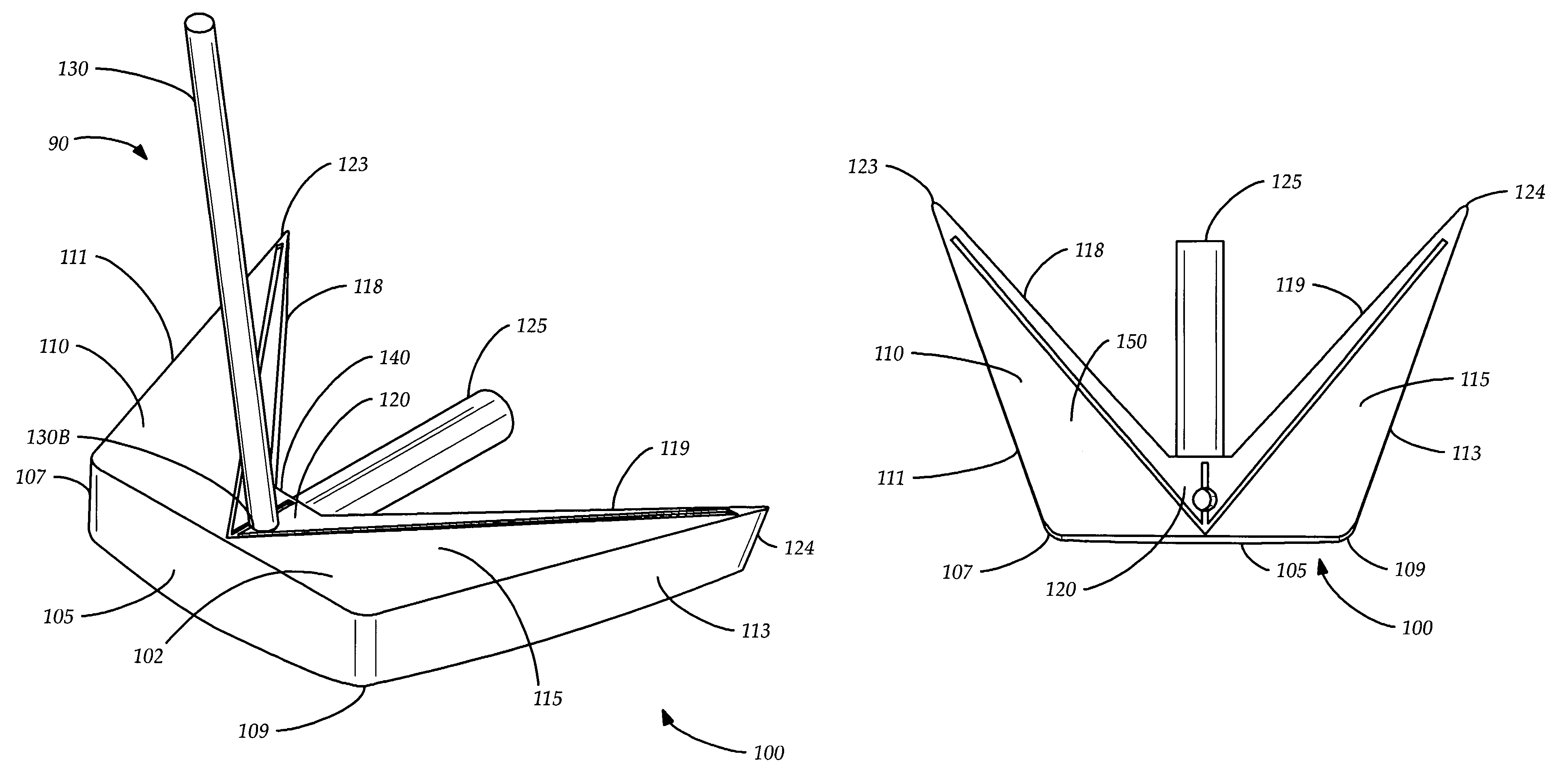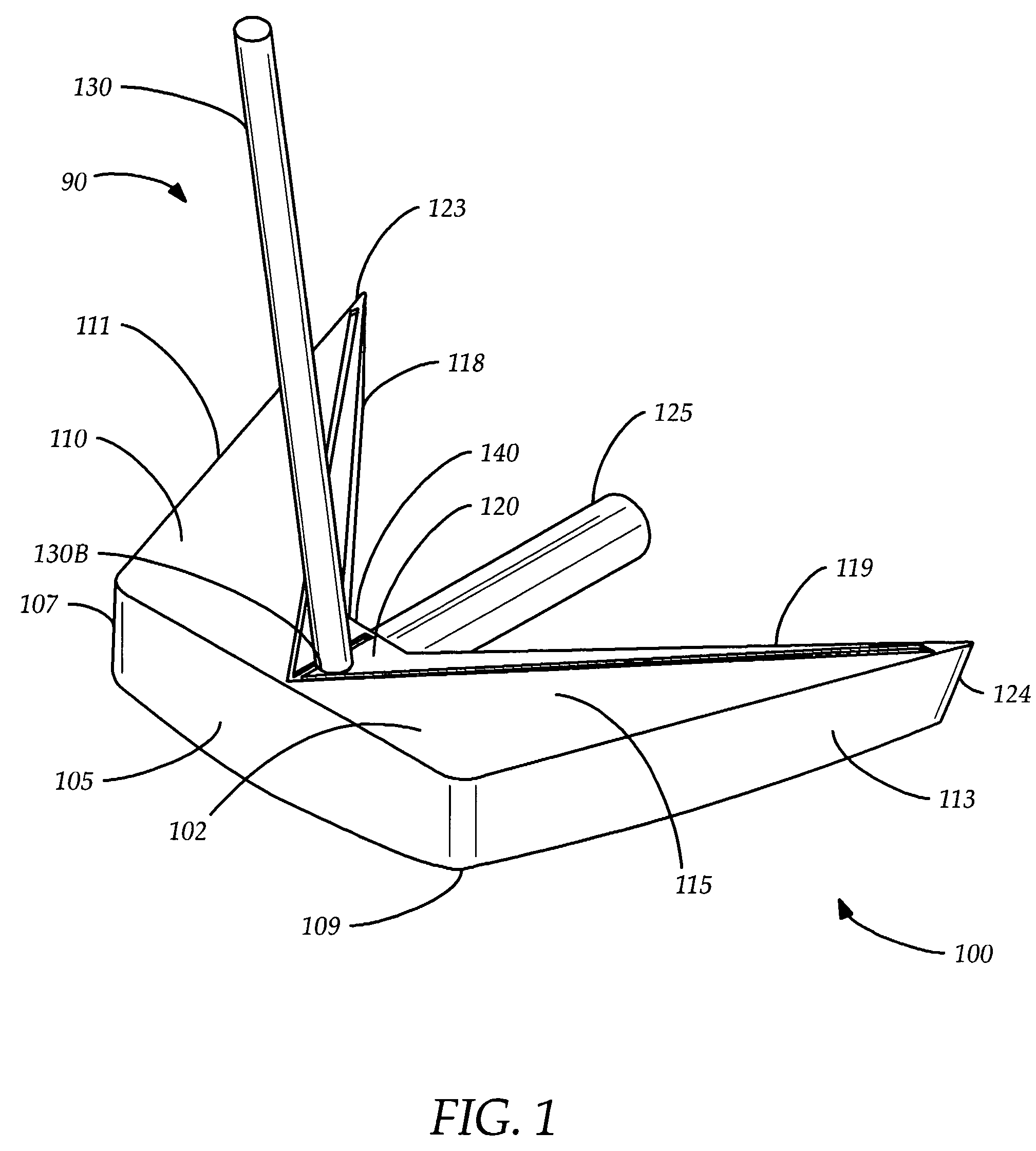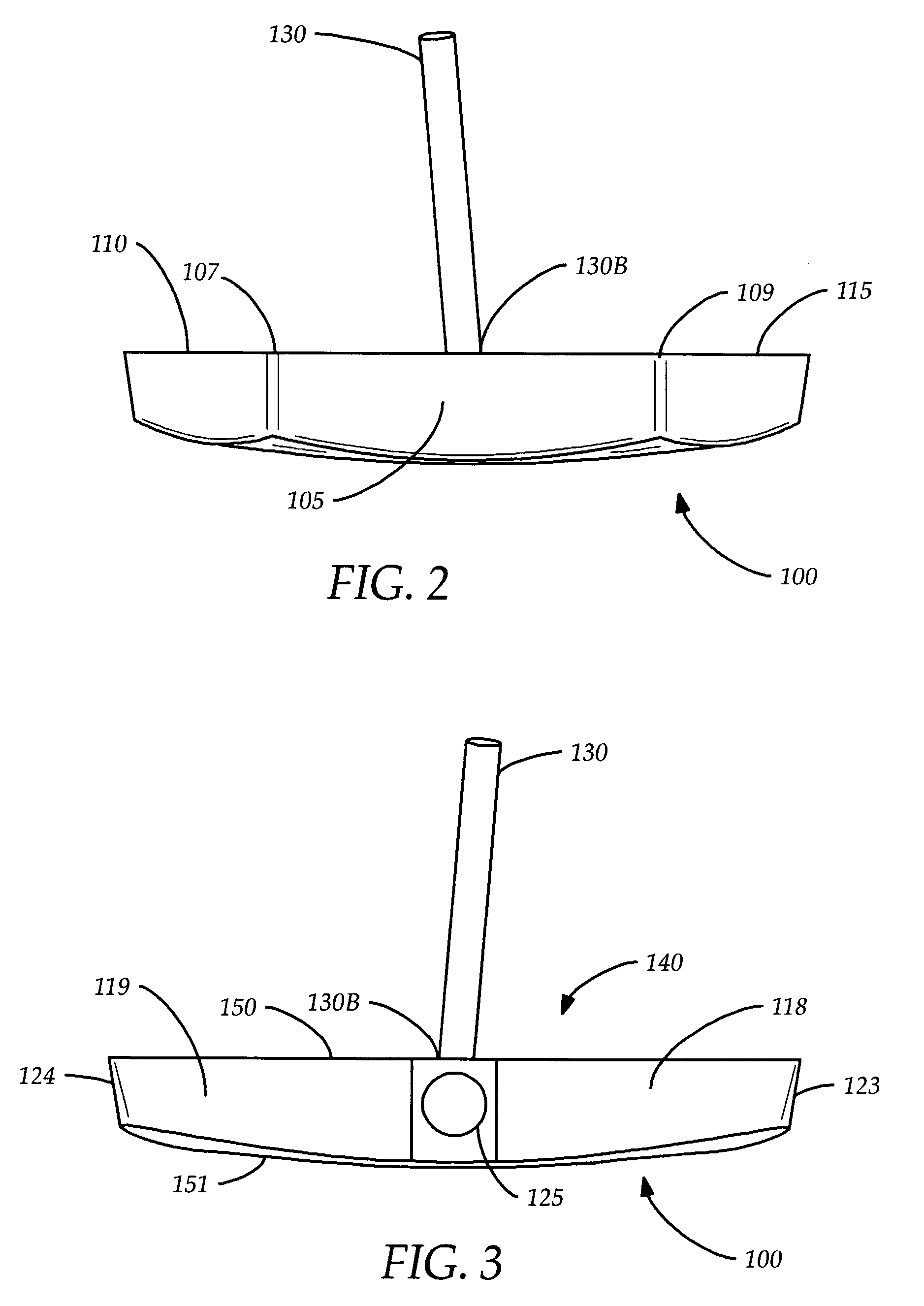Putter type golf club
a golf club and putter technology, applied in golf clubs, sport equipment, golf, etc., can solve the problems of putter becoming more difficult to rotate, and achieve the effect of resisting twisting and maximizing rotational inertia
- Summary
- Abstract
- Description
- Claims
- Application Information
AI Technical Summary
Benefits of technology
Problems solved by technology
Method used
Image
Examples
Embodiment Construction
[0027]Where used herein to refer to physical portions of the invention, the terms “heel” and “toe” with respect to the accompanying drawings, assume the invention described is used by a left-handed golfer. When used by a right-handed golfer all such descriptions will be reversed, as such terms are essentially interchangeable provided their usage remains consistent.
[0028]FIG. 1 illustrates a putter 90 in accordance with the principles of the present invention, having a putter head 100 and a shaft 130. The shaft 130 has a bottom 130B which is attached to the putter head 100. The putter head 100 has a shaft connection hole 120, where the bottom 130B of the shaft 130 is attached. The putter head 100 also has a main body 102, having a top surface 150, a bottom surface 151, a main body rear 140, and a front striking face 105 which is that part that actually strikes a golf ball when making a putt.
[0029]In accordance with the principles of the present invention, the putter head also has a h...
PUM
 Login to View More
Login to View More Abstract
Description
Claims
Application Information
 Login to View More
Login to View More - R&D
- Intellectual Property
- Life Sciences
- Materials
- Tech Scout
- Unparalleled Data Quality
- Higher Quality Content
- 60% Fewer Hallucinations
Browse by: Latest US Patents, China's latest patents, Technical Efficacy Thesaurus, Application Domain, Technology Topic, Popular Technical Reports.
© 2025 PatSnap. All rights reserved.Legal|Privacy policy|Modern Slavery Act Transparency Statement|Sitemap|About US| Contact US: help@patsnap.com



